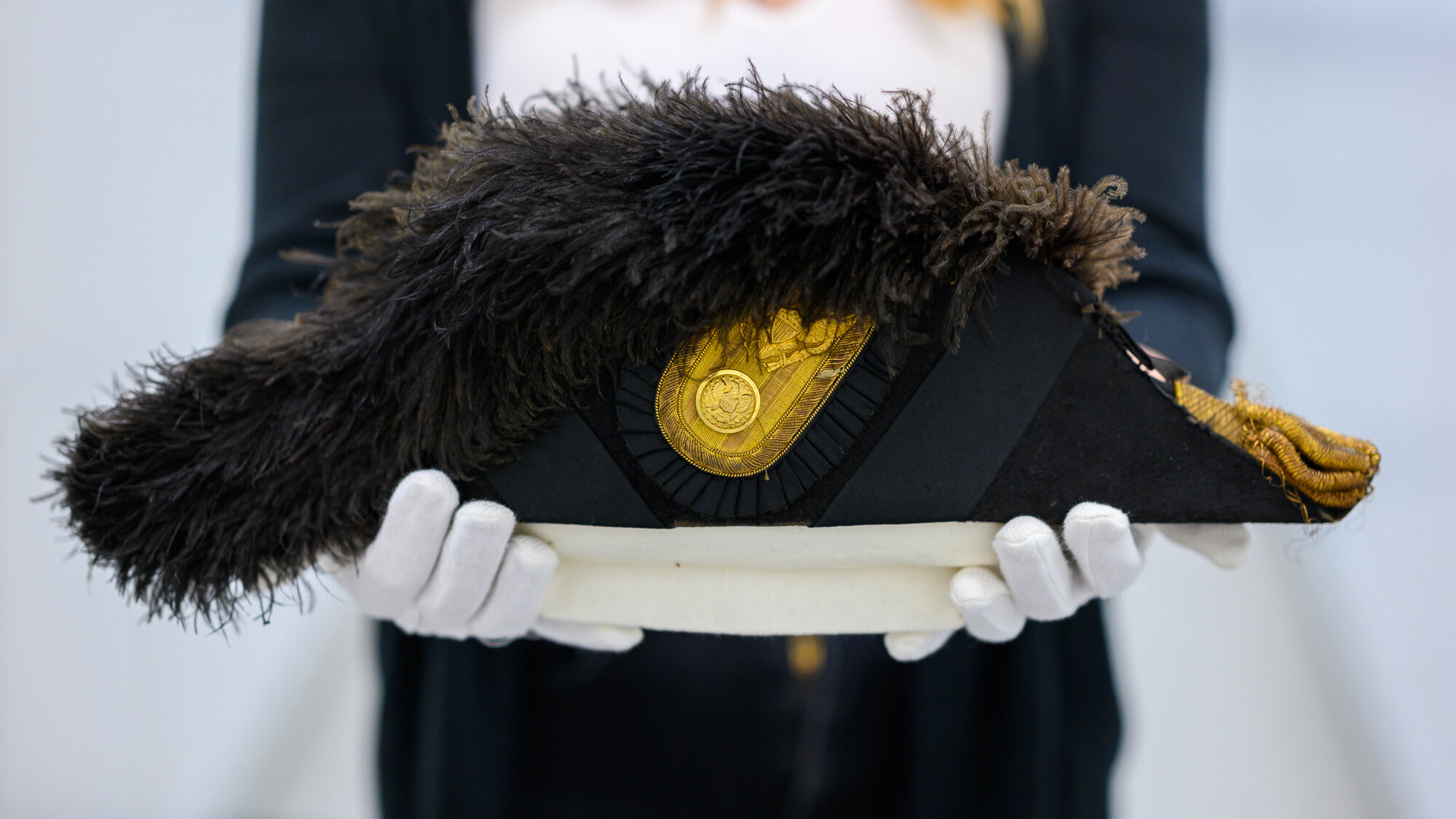Deaccessioning
Frequently Asked Questions
A deaccessioned object is held by museum staff in gloved hands.
Photo by Galt Museum & Archives.
What is deaccessioning and why do museums do it?
Deaccessioning is a best practice for museums and involves removing objects from a museum's collections. Museums may choose to deaccession for a variety of reasons, including:
Relevance (objects no longer fit the museum's collecting mandate);
Condition (objects in poor condition may be removed for the safety of staff and collections); and
Duplication (a museum may have multiple copies of an object and, with limited space, having duplicates may inhibit a museum's ability to collect new materials).
How did we decide which objects to deaccession?
The Galt Museum & Archives conducted seven "audits" of its collections between 2010 and 2019 to determine the relevancy of artifacts to the museum's collecting mandate. These audits assessed the objects in various collections, like large artifact collections, military collections, clothing and textile collections, and ethnographic collections. The audits consisted of extensive research into the histories of artifacts and their donors.
The objects selected for deaccession in 2021 were identified during the audits of the military collections in 2012 and 2014. The extensive research during those audits found that those objects had no connections to the museum's mandated collecting region, had connections to another geographical region, or were duplicates of other objects in the collection but in worse condition.
Why did you collect things not within your collecting mandate in the first place?
The collections mandate was not always as finely tuned as it is today. Early in the Galt's collecting operations, objects were collected without documentation showing the object's historical context to our region.
Today, the Galt's collecting mandate stretches from Stavely, AB in the north to the Canada—U.S. border in the south, and from the Alberta—B.C. border in the west to Bow Island, AB in the east. With these clear parameters, some objects that were collected many years ago no longer fit our mandate. For example, objects that were used in Calgary or in the United States but never saw active use within our mandated region do not fit our collecting mandate.
What does the deaccessioning process look like?
Objects qualified for deaccession through collections audit research have detailed rationales written to summarize their reasons for deaccession. The objects and rationales are presented to the Galt Museum's Cultural History Collection Committee and then to the Galt's Board of Directors. These groups are made up of representatives from diverse backgrounds who provide oversight to the Galt's collections. The objects and rationales for deaccession are reviewed by both the committee and the board. Final approval for deaccession comes from the Board of Directors.
What will happen to the deaccessioned objects?
Any objects approved for deaccession are subject to industry best practices for disposal, which include the following steps (in order):
Offer to the Galt Museum's educational programs and collections for future educational purposes;
Offer to public institutions, like other museums, for transfer;
Advance to public sale through qualified vendors or auctions;
As a last resort, an object may be permanently destroyed.
More information about best practices for deaccessioning and disposal of artifacts can be found here:
Can the objects be given back to their original donors?
No. When a person donates an item to the museum, they transfer all ownership over to the Galt Museum & Archives; therefore, the object no longer belongs to them. Donors may also have been issued a tax receipt when they donated items. It would be against Canadian tax laws and our Collections Policy to return an item to a donor, especially if they have received financial compensation from the donation through a tax benefit.
What will happen with the money from any public sales?
Funds resulting from a deaccession, through a public sale, for example, must be used to further "acquisitions." In other words, the funds are used for additions to the collections and for repairs, restoration, or conservation of other artifacts.













But many objects in the Galt’s collections are essentially "voiceless.” Find out what that means and why in our most recent Galt’s Vaults video with Kevin MacLean.